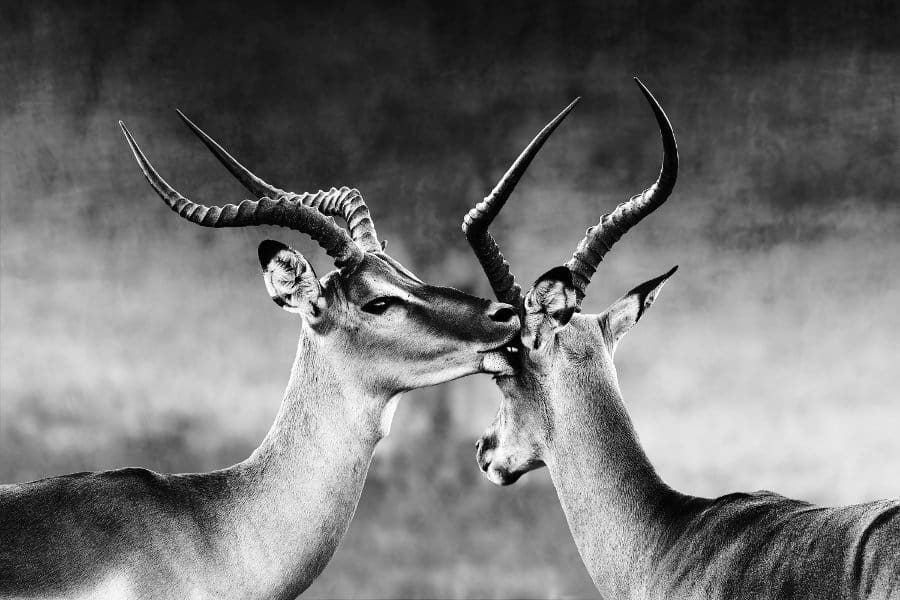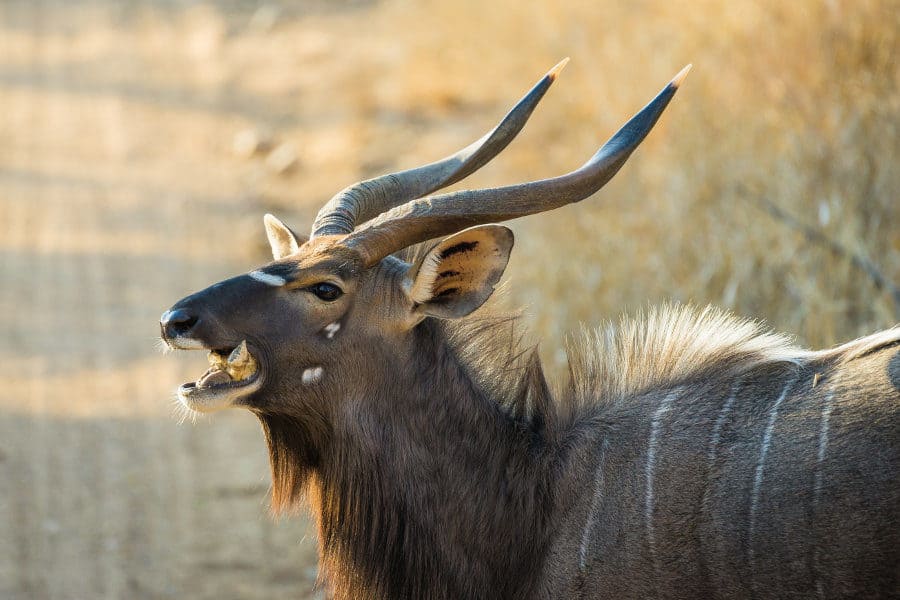With their astonishing horns and painted faces, sable antelope are one of Africa’s most iconic species.
They are majestic antelope, yet they are under threat due to habitat destruction and trophy hunting.
Who would harm the sable antelope? Certainly nobody who knew the incredible facts behind this most magnificent of antelopes.
1. Sable antelope horns can grow up to 1.6 metres in length

To put 1.6 metres into perspective, it’s roughly the same length as an elephant’s tusk. 1.6 metres! A sable antelope’s horns can be longer than most people!
Sable grow these horns over an entire lifetime. Each year they develop a new ring, so the sable’s horns can be used to determine age.
At first they grow straight and tall. Slowly the horns arc backwards to give sable antelope their distinctive appearance.
Male sable antelope grow horns up to 1.6 metres in length. Unlike some antelope species females also develop horns, although these only grow to around 1 metre in length.
2. Meet the hippotragus niger
Most animals have bizarre scientific names that nobody can remember. But hippotragus niger! It sounds like a baddy from a Netflix series about Greek gods.
Sable antelope are members of the hippotragini tribe of horse antelopes. They are named this way due to their powerful stature, thick necks and erect mane.
They come from the same family as the roan antelope, bluebuck, bontebok and blesbok.
In Greek hippos means horse and tragos means a he-goat. Niger is the Latin word for black or dark-coloured. So their scientific name translates as “black horse-like goat!”
3. Posturing like a horse
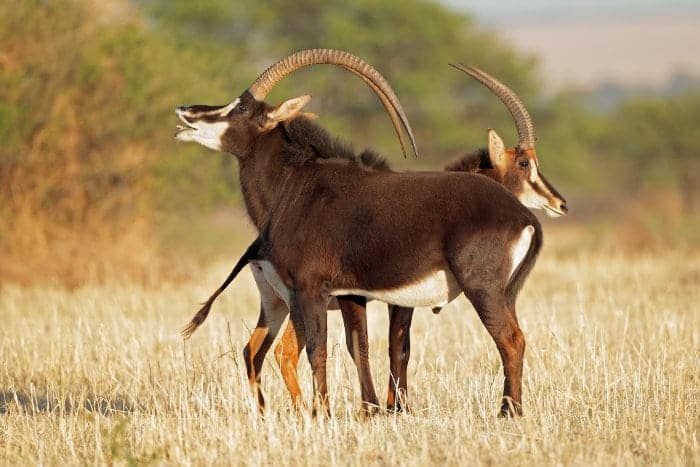
When sable want to show off they will push their chest forward, raise their neck towards the sky, pull their shoulders back and present their magnificent horns.
This kind of posturing is very similar to horses, who of course don’t have the horns.
Bulls compete for females and territory. First they posture and attempt to show their dominance without resorting to battle.
When bulls do decide to fight they drop to their knees and engage in lengthy horn wrestling battles. Many antelope clash horns in battle and fatalities are relatively common.
Sable choose not to engage in dangerous or debilitating action. By kneeling down they can battle for power without destroying a rival.
4. One of Africa’s largest antelope
Adult sable antelope grow to over 200 kg. They are giants, measuring up to 1.4 metres at the shoulder and over two metres in length.
Add on the horns and these antelope are among Africa’s most distinctive species. Except they are not the easiest to find, nor are they very abundant.
Sable antelope are included in our list of Africa’s most elegant antelope species, and Africa’s largest antelope species.
There is also a giant sable antelope, a subspecies native to Angola that is now critically endangered. Only 100 of them remain – yikes!
5. Only 50,000 sable antelope remain across 11 countries

That’s a rather worrying number given how sable antelope are a favourite quarry for trophy hunters.
The bad news is that this number is declining. The IUCN still classify sable antelope as an animal of least concern but this does not mean they are safe from harm.
The good news is that these animals are resident in 11 different African countries, including the DRC, Malawi and Zimbabwe.
6. Hunted for their horns as a trophy
Many trophy hunters visiting Africa have sable antelope at the top of their wish list. They are cheaper to hunt than the big five and their trophy is considered just as impressive.
It’s still an amazement that any vulnerable species can be hunted legally. Some people argue that controlled hunting raises money for wildlife conservation, so it must be a good thing.
African safaris also raise money for wildlife conservation. And they don’t result in a majestic animal being shot down and killed for human pleasure. Seriously, senseless killing in the name of conservation? That makes no sense.
The big challenge for sable antelope is that their two largest populations are in two places where trophy hunting is rife. One of these is Selous in Tanzania. This is Africa’s largest game reserve but 90% of it is gazetted as a hunting concession.
The other is Zimbabwe, where controls on trophy hunting have been difficult to maintain due to political instability.
7. Sable run at 57 km/h to escape their predators
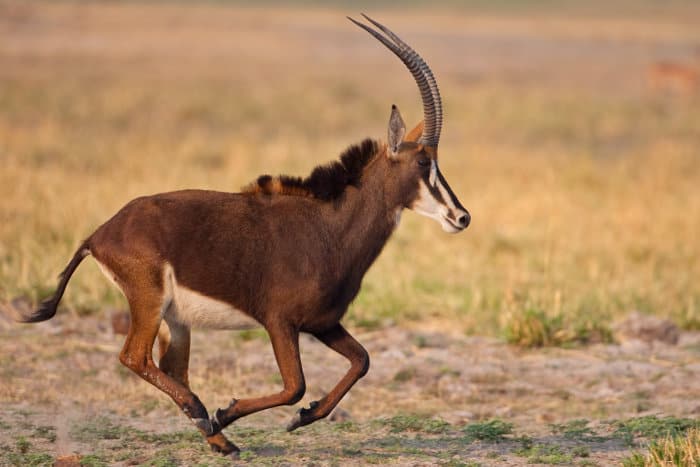
Lions, leopards and hyenas are the sable’s main predators, closely followed by humans. Unfortunately, sable cannot run from bullets, but they can run from predators on four legs.
While they can look big and slow, sable antelope can reach top speeds of 57 km/h. They can maintain this top speed for more than three kilometres.
Lions and leopards don’t have the stamina to keep up, so they must take down their quarry within a few hundred metres. Hyenas have a different tactic. They hunt sable in clans, engaging the antelope from different angles while attempting to avoid its horns.
8. Horns are a final form of defence
When attacked a sable antelope will run. But when cornered or wounded a sable antelope will fight back.
They use their incredible horns to ward off predators, jabbing at lions and hyenas, slashing with the horn rings and sharp point.
These horns are dangerous, especially on top of a 250 kg animal. Animal predators typically target juveniles, while humans usually target the largest bulls.
9. Living between woodland savannah and the grassland
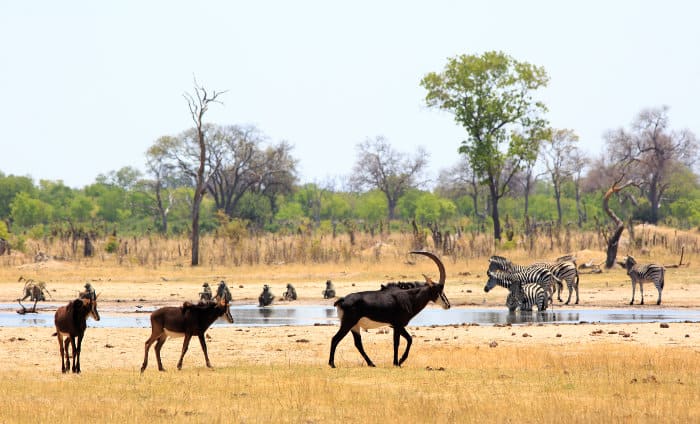
Some African animals have adapted to live anywhere. For example, springbok can live an entire lifetime without water and take all their fluids from vegetation. So they go and live on arid plains where predators cannot bring trouble.
Sable antelope are as picky as their horns are majestic. Their favourite habitat is miombo woodland. It’s a mixed habitat consisting of trees, bush and grassland, something that is mostly found in Kruger and Zimbabwe.
They are an edge species, meaning that they live on the fringes between habitats so they can broaden their dinner menu.
10. Sable antelopes graze and browse
One reason for their fastidious habitat choice is their diet. Sable antelope graze and browse. They spend most of the rainy season inside woodland, browsing on fresh foliage.
After the rain they emerge onto grassland to feed on all the new grass. Unlike springbok, sable are dependent on water. They must stay within a one-day walk of a water supply, which also limits where they can live.
11. Small herds roaming huge territories
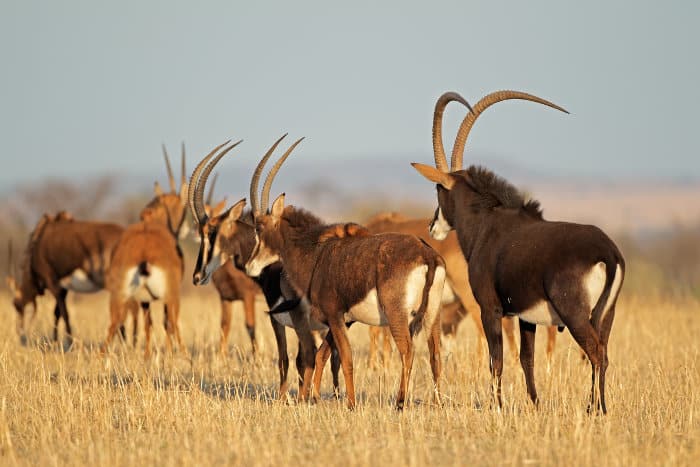
Sable antelope need to consume enormous amounts of food. They are constantly on the move across large home ranges.
In general they live in small herds and their population density is one of the lowest among African antelope species. However, in Zimbabwe and Kruger they can be seen in larger herds, sometimes in herds of over 100 individuals.
Herds have a dominant hierarchy mostly decided by seniority. They consist of females and juveniles, along with a dominant male. Young males are allowed to live as lodgers on a herd’s territory, but they are not permitted interaction with females.
12. Did you ever see a sable antelope creche?
Like many antelope species, the males are forced out upon sexual maturity. They form bachelor herds and try to build their strength before competing for their own territory.
As the sable move large distances the young calves cannot always keep up. Elephants carefully nurture their calves and never leave any behind. Sable antelope just keep walking, leaving their creche of calves unguarded!
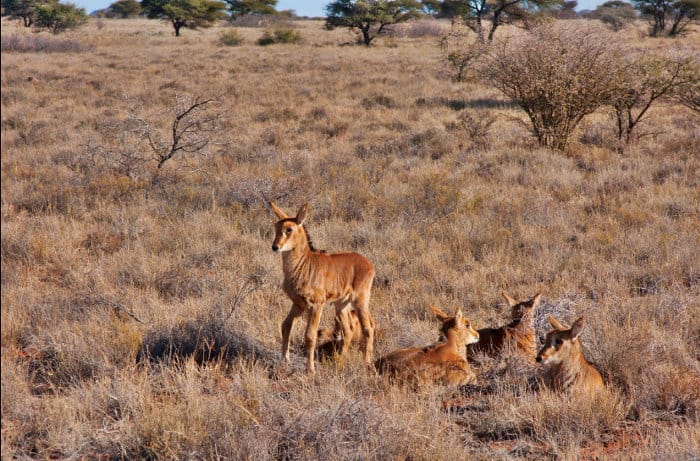
You can say that this is some rather irresponsible parenting, especially considering how young sable are a perfect meal for leopards!
Sable Antelope in the Wild

Now that you know 12 facts about sable antelope it’s time to go see one in the wild. This guide on Zimbabwe safaris will help you plan a safari in the country with the largest sable antelope population.
Also consider game drives in Selous or Ruaha, as part of a Tanzania safari. Zambia safaris are hugely underrated and this is also a great country to see sable antelope from close quarters. Kruger is another wonderful place to encounter these majestic antelope.


